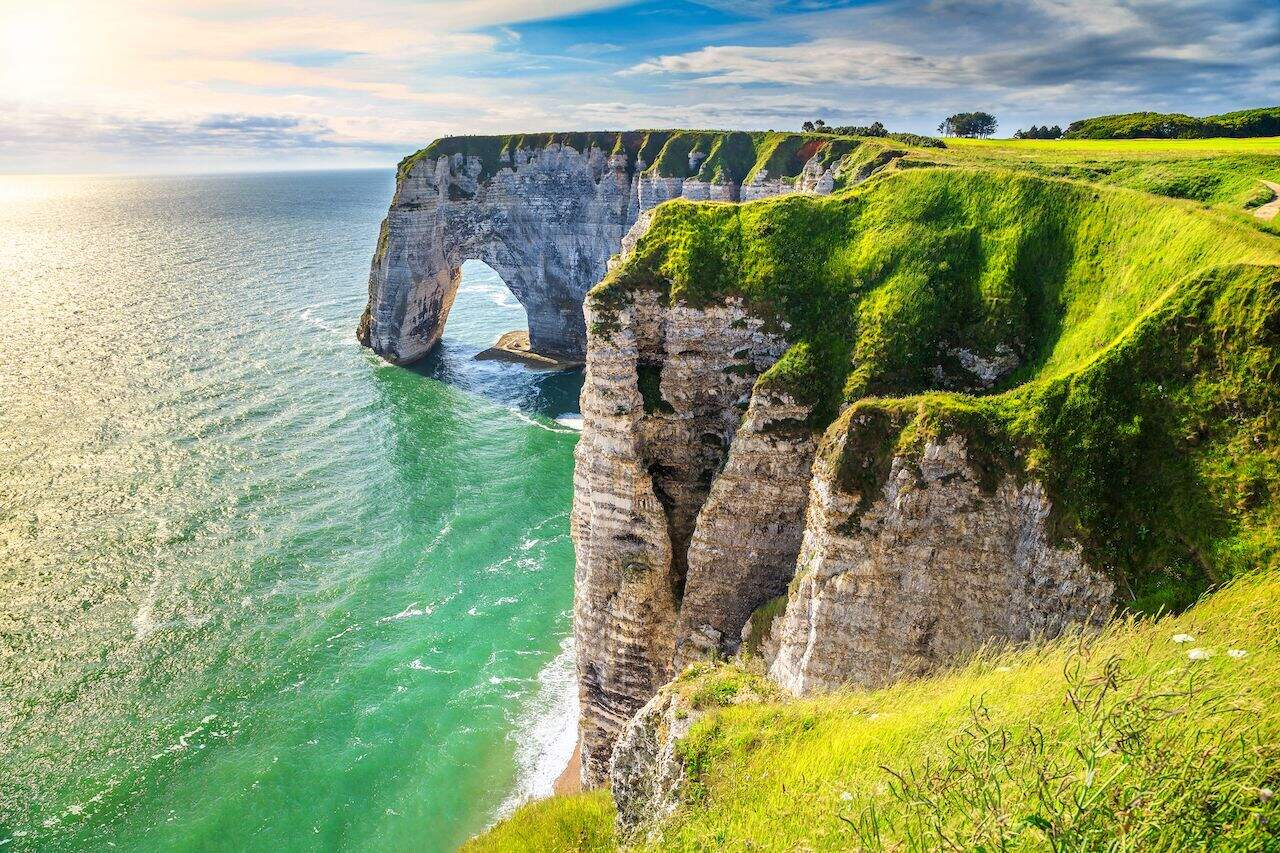
Did you know that coastlines are constantly changing? These dynamic borders between land and sea are shaped by natural forces like waves, tides, and weather. Coastlines can be rocky cliffs, sandy beaches, or even marshy wetlands. They provide habitats for countless species and are crucial for human activities like fishing, tourism, and shipping. Coastlines also act as natural barriers, protecting inland areas from storms and erosion. However, they face threats from rising sea levels and human development. Understanding these fascinating edges of our continents helps us appreciate their beauty and importance. Let's dive into 35 intriguing facts about coastlines!
Key Takeaways:
- Coastlines are home to diverse wildlife, unique ecosystems, and stunning landscapes. They provide habitats for marine life and offer a wide range of recreational activities.
- Efforts to protect coastlines are crucial for preserving their beauty and biodiversity. Marine protected areas and beach cleanups help reduce pollution and protect marine life.
The Longest Coastlines in the World
Coastlines are fascinating. They offer stunning views, unique ecosystems, and a variety of activities. Let's dive into some intriguing facts about the world's coastlines.
-
Canada boasts the longest coastline in the world, stretching over 202,080 kilometers. This vast expanse touches three oceans: the Atlantic, Pacific, and Arctic.
-
Indonesia comes in second with a coastline of about 54,716 kilometers. Its thousands of islands contribute to this impressive length.
-
Greenland, despite its icy reputation, has the third-longest coastline, measuring around 44,087 kilometers. The icebergs and glaciers add to its rugged beauty.
Unique Coastal Features
Coastlines aren't just about length. They also feature unique landscapes and ecosystems. Here are some interesting facts about these features.
-
The Great Barrier Reef in Australia is the world's largest coral reef system, stretching over 2,300 kilometers. It's so vast it can be seen from space.
-
The Dead Sea coastline is the lowest point on Earth's surface, sitting at 430 meters below sea level. Its high salt content makes it impossible for most life forms to survive.
-
The Bay of Fundy in Canada has the highest tidal range in the world, with tides reaching up to 16 meters. This dramatic rise and fall create unique tidal phenomena.
Coastal Wildlife
Coastlines are home to diverse wildlife. From birds to marine creatures, these areas are teeming with life.
-
Penguins are commonly found along the coastlines of Antarctica and parts of South America. They are excellent swimmers but clumsy on land.
-
Sea turtles often nest on tropical and subtropical beaches. They travel thousands of kilometers to return to the same beaches where they were born.
-
Mangroves are unique coastal trees that thrive in salty water. They provide crucial habitats for many marine species and protect shorelines from erosion.
Human Interaction with Coastlines
Humans have always been drawn to coastlines for settlement, trade, and recreation. Here are some facts about our interaction with these areas.
-
Venice, Italy, is famous for its canals and is built on a series of islands. Rising sea levels pose a significant threat to this historic city.
-
The Maldives is the lowest country in the world, with an average ground level of just 1.5 meters above sea level. Rising sea levels could submerge these islands.
-
The Great Wall of China extends to the Bohai Sea, marking the eastern end of this ancient structure. It was built to protect against invasions.
Coastal Erosion and Conservation
Coastal erosion is a significant issue affecting many regions. Conservation efforts are crucial to protect these valuable areas.
-
The White Cliffs of Dover in England are eroding at a rate of about 1 centimeter per year. These iconic cliffs are made of soft chalk.
-
The Sundarbans in India and Bangladesh is the largest mangrove forest in the world. It's a UNESCO World Heritage site and home to the Bengal tiger.
-
The Netherlands has a long history of battling the sea. About 26% of the country lies below sea level, protected by an extensive system of dikes and pumps.
Coastal Tourism
Coastal areas are popular tourist destinations, offering beautiful beaches and recreational activities. Here are some facts about coastal tourism.
-
Hawaii is a top destination for surfers, thanks to its large waves and warm waters. The North Shore of Oahu is particularly famous for its surf spots.
-
The French Riviera attracts millions of tourists each year with its glamorous beaches and Mediterranean climate. Cities like Nice and Cannes are hotspots for luxury travel.
-
The Amalfi Coast in Italy is renowned for its stunning cliffs and picturesque villages. It's a UNESCO World Heritage site and a popular destination for travelers.
Coastal Cities
Many of the world's major cities are located along coastlines. These cities benefit from trade, tourism, and natural beauty.
-
New York City has a coastline of 837 kilometers, including its islands and waterfronts. The city's ports are vital for international trade.
-
Tokyo is situated on Tokyo Bay, providing access to the Pacific Ocean. It's one of the world's largest and most densely populated cities.
-
Sydney is famous for its harbor, which includes the iconic Sydney Opera House and Harbour Bridge. The city's beaches, like Bondi Beach, are also well-known.
Coastal Weather and Climate
Coastal regions often experience unique weather patterns and climates. Here are some facts about coastal weather.
-
Hurricanes form over warm ocean waters and can cause significant damage to coastal areas. The Atlantic hurricane season runs from June to November.
-
Monsoons bring heavy rains to coastal regions in South Asia. These seasonal winds are crucial for agriculture but can also cause flooding.
-
Fog is common along the coast of California, particularly in San Francisco. The city's famous fog, known as "Karl," often blankets the Golden Gate Bridge.
Coastal Geology
The geology of coastlines can vary widely, from sandy beaches to rocky cliffs. Here are some geological facts about coastlines.
-
The Giant's Causeway in Northern Ireland features about 40,000 interlocking basalt columns. This natural wonder was formed by volcanic activity.
-
The Twelve Apostles are limestone stacks off the coast of Victoria, Australia. These formations were created by erosion from the Southern Ocean.
-
The Cliffs of Moher in Ireland rise 214 meters above the Atlantic Ocean. These dramatic cliffs are made of shale and sandstone.
Coastal Ecosystems
Coastal ecosystems are incredibly diverse and support a wide range of species. Here are some facts about these ecosystems.
-
Coral reefs are often called the "rainforests of the sea" due to their biodiversity. They provide habitats for about 25% of all marine species.
-
Estuaries are areas where freshwater from rivers meets saltwater from the sea. These nutrient-rich environments support a variety of wildlife.
-
Salt marshes are coastal wetlands that are flooded and drained by saltwater. They act as natural buffers against storms and provide habitats for many species.
Coastal Activities
Coastlines offer a variety of recreational activities. Here are some popular coastal activities and related facts.
-
Snorkeling allows people to explore underwater ecosystems without the need for scuba gear. Coral reefs are popular snorkeling spots.
-
Beach volleyball is a popular sport played on sandy beaches. It became an Olympic sport in 1996.
-
Sailing is a favorite pastime in many coastal regions. The America's Cup is one of the most prestigious sailing competitions in the world.
Coastal Conservation Efforts
Efforts to protect and preserve coastlines are essential for maintaining their beauty and biodiversity. Here are some facts about coastal conservation.
-
Marine protected areas (MPAs) are regions where human activity is restricted to protect marine ecosystems. There are over 14,000 MPAs worldwide.
-
Beach cleanups are organized events where volunteers collect trash from beaches. These efforts help reduce pollution and protect marine life.
The Final Shoreline
Coastlines are more than just borders between land and sea. They’re dynamic, ever-changing, and full of surprises. From the longest coastline in Canada to the shortest in Monaco, each one tells a unique story. Coastlines also play a crucial role in ecosystems, providing habitats for countless species and protecting inland areas from storms. They’re vital for human activities too, supporting fishing, tourism, and even space launches. Understanding these facts helps us appreciate the importance of preserving these natural wonders. Next time you visit a beach, remember the fascinating details that make coastlines special. Whether it’s the mystery of disappearing islands or the beauty of coral reefs, there’s always something new to learn. Keep exploring, stay curious, and cherish the world’s coastlines.
Frequently Asked Questions
Was this page helpful?
Our commitment to delivering trustworthy and engaging content is at the heart of what we do. Each fact on our site is contributed by real users like you, bringing a wealth of diverse insights and information. To ensure the highest standards of accuracy and reliability, our dedicated editors meticulously review each submission. This process guarantees that the facts we share are not only fascinating but also credible. Trust in our commitment to quality and authenticity as you explore and learn with us.


